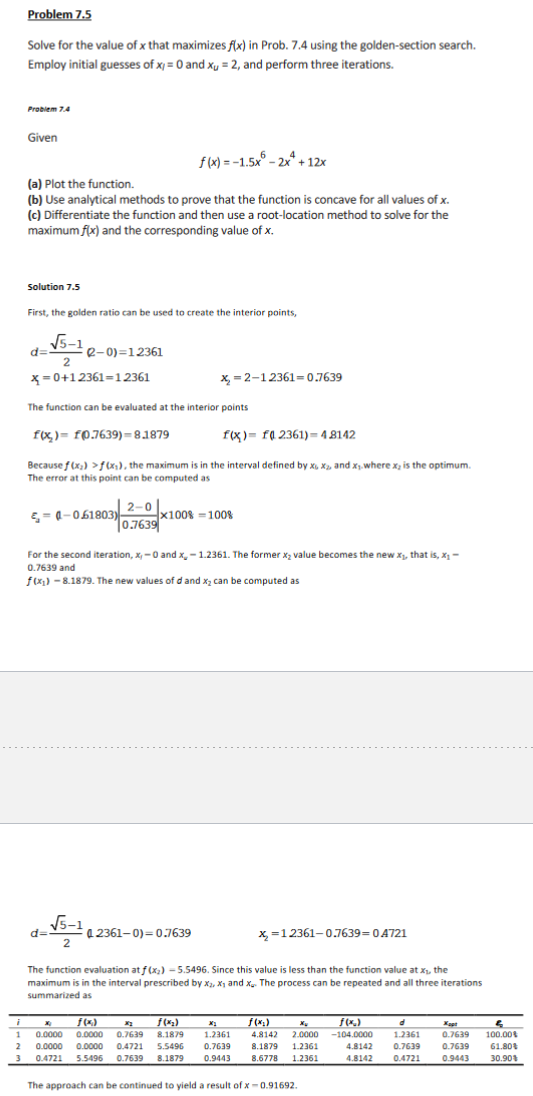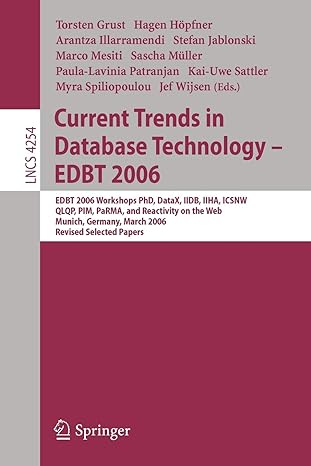Question
Problem 7.5 Solve for the value of x that maximizes f(x) in Prob. 7.4 using the golden-section search. Employ initial guesses of x_(l)=0 and x_(U)=2
Problem 7.5\ Solve for the value of
xthat maximizes
f(x)in Prob. 7.4 using the golden-section search.\ Employ initial guesses of
x_(l)=0and
x_(U)=2, and perform three iterations.\ Problem 7.4\ Given\
f(x)=-1.5x^(6)-2x^(4)+12x\ (a) Plot the function.\ (b) Use analytical methods to prove that the function is concave for all values of
x.\ (c) Differentiate the function and then use a root-location method to solve for the\ maximum
f(x)and the corresponding value of
x.\ Solution 7.5\ First, the golden ratio can be used to create the interior points,\
d=(\\\\sqrt(5)-1)/(2)(2-0)=1.2361\ x_(1)=0+1.2361=1.2361,x_(2)=2-1.2361=0.7639\ The function can be evaluated at the interior points\
f(x_(2))=f(0.7639)=8.1879,f(x_(1))=f(1.2361)=4.8142\ Because
f(x_(2))>f(x_(1)), the maximum is in the interval defined by
x_(6)x_(2)and
x_(1), where
x_(2)is the optimum.\ The error at this point can be computed as\
\\\\epsi _(a)=(1-0.61803)|(2-0)/(0.7639)|\\\\times 1008=1008\ For the second iteration,
x_(1)-0and
x_(w)-1.2361. The former
x_(2)value becomes the new
x_(1), that is,
x_(1)-\ 0.7639 and\
f(x_(1))-8.1879. The new values of
dand
x_(2)can be computed as\
d=(\\\\sqrt(5)-1)/(2)(1.2361-0)=0.7639,x_(2)=1.2361-0.7639=0.4721\ The function evaluation at
f(x_(2))-5.5496. Since this value is less than the function value at
x_(1), the\ maximum is in the interval prescribed by
x_(2),x_(1)and
x_(0). The process can be repeated and all three iterations\ summarized as\ The approach can be continued to yield a result of
x=0.91692.\ \ \ \ \ \ \ \ \ \ \ SOLVE THE 4TH ITERATION!!!

Step by Step Solution
There are 3 Steps involved in it
Step: 1

Get Instant Access to Expert-Tailored Solutions
See step-by-step solutions with expert insights and AI powered tools for academic success
Step: 2

Step: 3

Ace Your Homework with AI
Get the answers you need in no time with our AI-driven, step-by-step assistance
Get Started


